This post was originally found on Shift Movement Science, by my pal, Dr. Dave Tilley, DPT.
A good bridge is a fundamental part of gymnastics. Unfortunately, it is also a movement that gives coaches, healthcare providers, and athletes a lot of problems. Back pain with bridges and other hyper extension skills is a huge issue within gymnastics. There are many factors to what constitutes a good bridge pattern, much more than just shoulder flexibility or tight hip flexors. Screening out each part to a bridge pattern is a where people must start, and then from these screens drills can be applied correctly based on what was found, and then over time the movements re-tested to make sure progress is being made.
When I first started my blog, I wrote a post on bridge mobility. I have learned a lot more in the last 4 years from treating tons of gymnasts for back pain/overhead mobility problems, reading research, and coaching gymnasts myself. Due to this, I wanted to write another updated bridge post. An important note, if your someone who knows an athlete who has back pain, please do not use this post as a replacement for formal medical testing. They must be evaluated. My goal of this post is to give people tools to screen for common issues limiting a bridge pattern, and ideally push off back or wrist pain proactively. Here are some body areas to consider if someones bridge is problematic.
1. Overhead Mobility
Without a doubt the most common issue that comes up when I treat gymnasts is that they lack true overhead mobility. By “true” overhead mobility I mean a gymnast being able to get their arms overhead without using their lower back to compensate, letting their shoulder blades move excessively, widening their hands, or by other means. It’s really important that you break out and screen overhead mobility specifically in different positions. I find this is best done by sitting at wall and doing some overhead motions to narrow in on just the upper body.
In my personal experience, limited overhead motion often times comes from a lack of soft tissue mobility in an athletes lat, teres, pec, or triceps muscles. This is usually paired with the natural progression of gymnastics (lots of kipping, pulling down, shaping causing stiffness over time), not the most individualized flexibility program, and strength imbalances. If soft tissue work is not being regularly done to these areas, problems tend to come up quick.
To work on these soft tissues, try some lat soft tissue work and a PVC undergrip stretch and pec mobilization. Following a few rounds or days of work, continue to retest the motion and see if progress is made.
Remember, progress seen may only be temporary as there are conflicting views in the research on long term carry over of soft tissue work and stretching. I teach people it is more about consistency over intensity. If you want to learn more about this, check out this popular post I wrote last month on a case study of a gymnast with shoulder pain. If limited progress is seen, seek out a full movement evaluation or look for more strength/control drills to help.
2. Thoracic Spine Mobility
Directly related to limited overhead mobility from soft tissue stiffness, is thoracic spine mobility. Many people tend to overlook the fact that stiffness in the middle or upper back can limit overhead flexibility, creating what looks like “tight shoulders”. It’s really important that we screen thoracic spine mobility with a rotation or extension test. The easiest way is to have the athlete sit on the corner of a block, then with arms crossed try to turn past the edges of the block (about 45+ degrees). More medical screening is needed, but not being able to do this may be indicative of limited thoracic spine mobility leading to limited overhead shoulder motion.
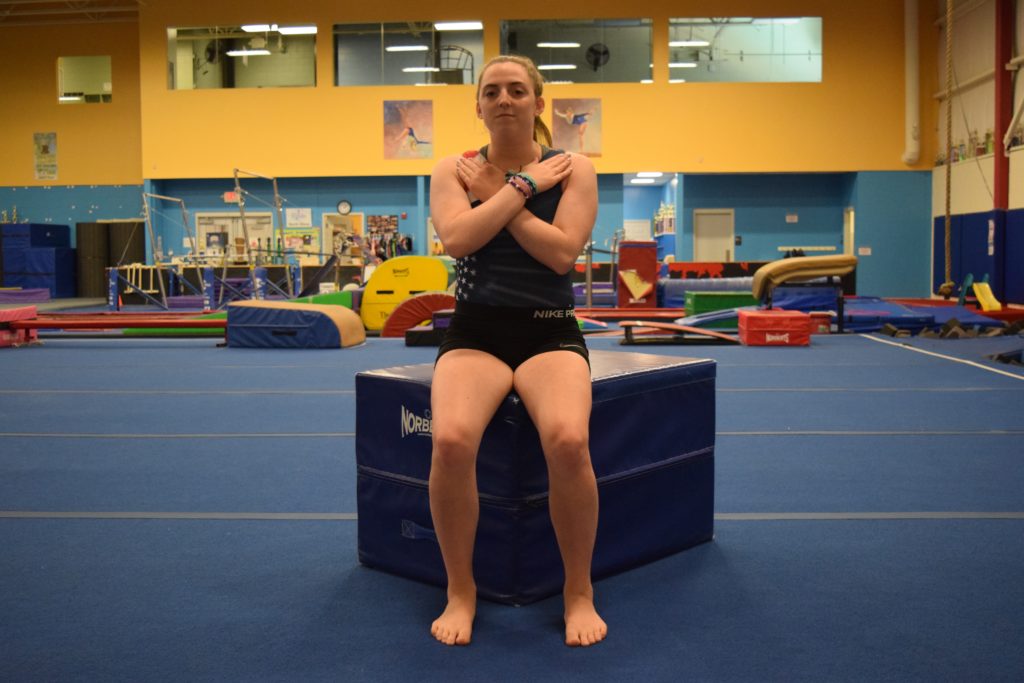
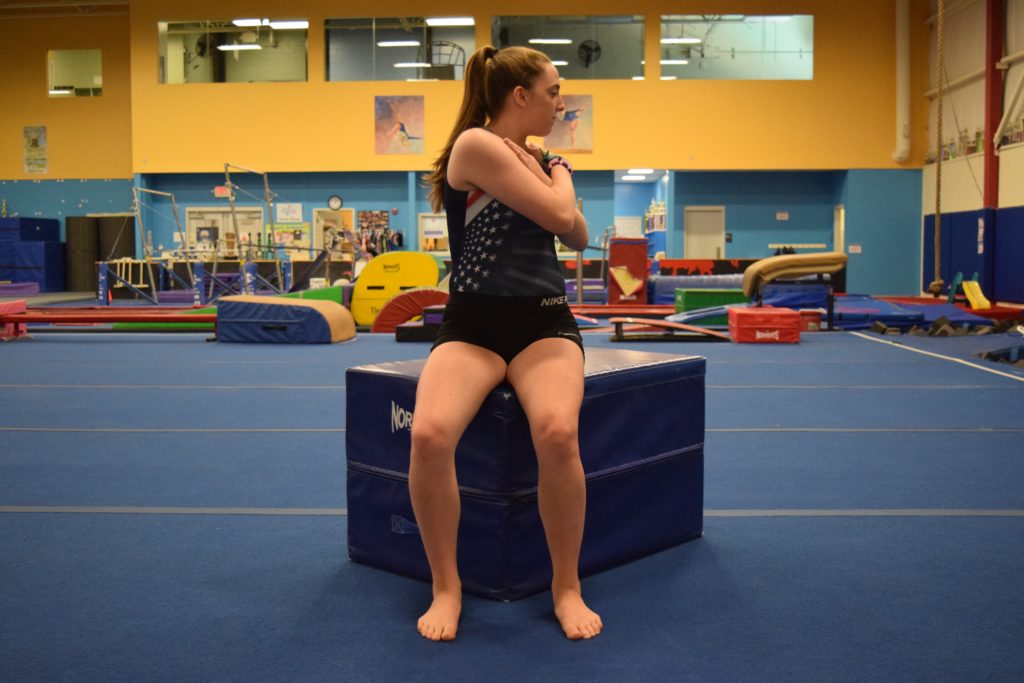
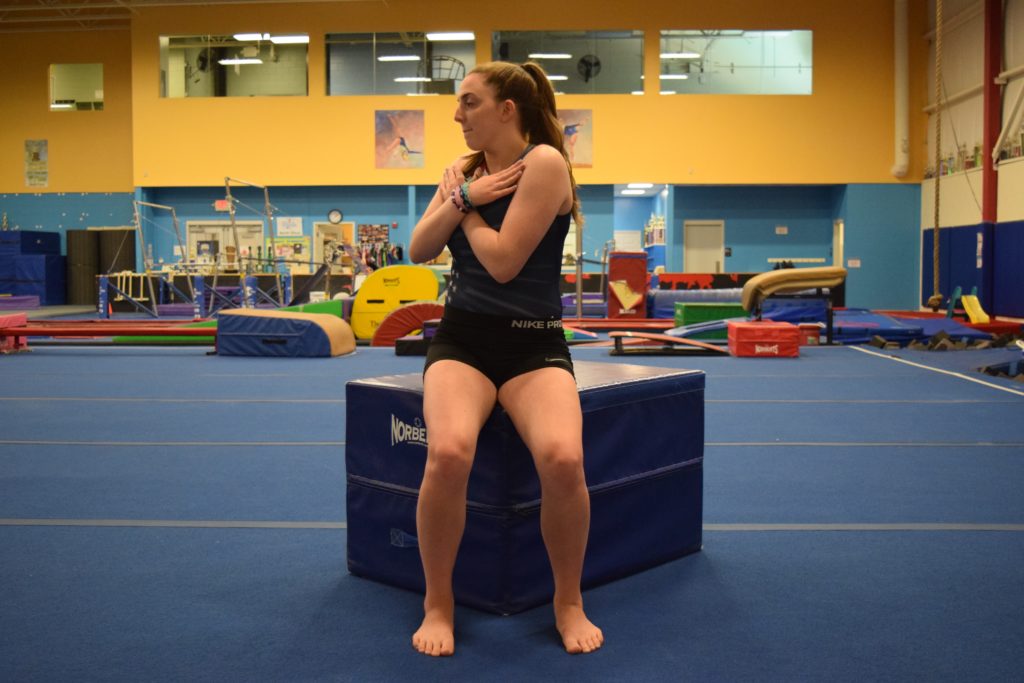
For athletes that are unable to pass this screen, I give regular thoracic spine mobility drills to help out first. Then as progress is made I teach them to slowly repattern their bridge by doing feet elevated type drills to take pressure of the lower back. These are two very simple exercises that may help.
Again keep in mind this is only one commons situation. Some athletes have the direct opposite problem, living in an over extended thoracic position. Applying the drills above to these athletes may not yield the progress desired. These athletes need some other drills that are best applied by a healthcare provider.
3. Hip Extension Mobility
Similar to the point above on shoulders, the hips of gymnasts also commonly get very stiff due to soft tissue limitations. This is most typically seen in their quads/hip flexors (conditioning imbalance, jumping and landing, legs straight for proper form) and high groin (legs together for proper form). If a gymnast lacks good hip flexor, quad, and groin mobility they may really struggle in a bridge due to a lack of full hip extension and hip external rotation. Although the groin is most often seen as only a limiting muscle for straddle splits, we have to remember there are difference portions of the groin that affect the pelvis tilting in front to back motions. So, if the groin tissue becomes stiff it can limit the hips opening to a bridge or create a gymnast who constantly lives with their pelvis sitting forward. I’m a big fan of regular foam rolling and soft tissue work to these areas.
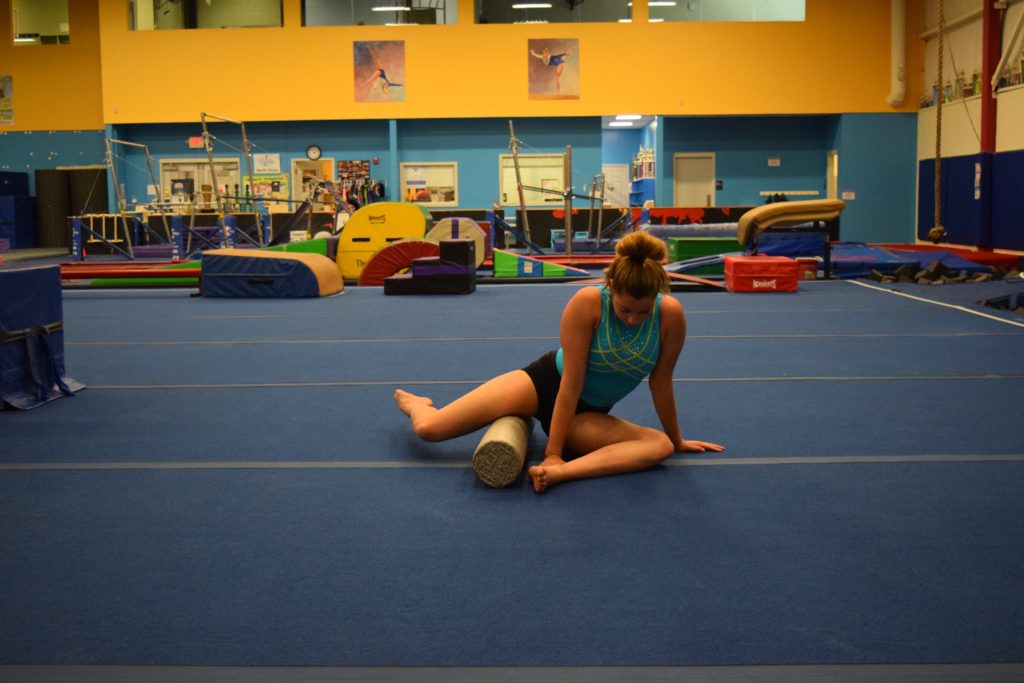
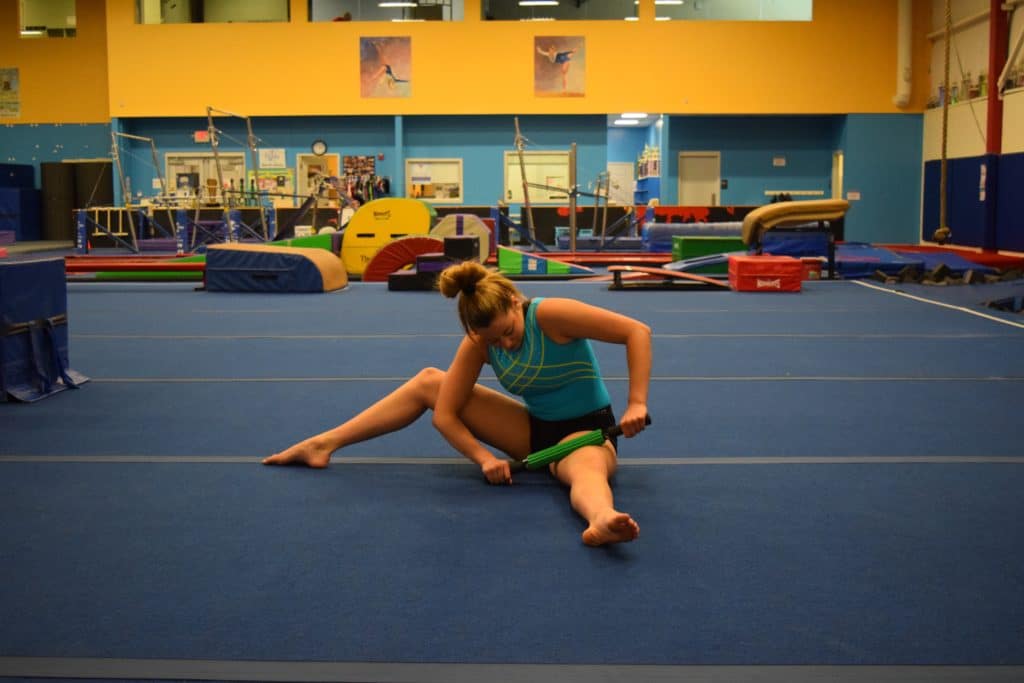
I think another part of this comes down to stretching techniques that may not be the most effective for the hip flexors, quads, and groin tissue. Keep in mind that aggressive stretching of the hip flexors and groin may not always be the best approach. For more on this newer concept, check out a short video I posted a few months back.
Building off that, here is another video I made to walk through this idea. It shows a great hip stretch variation I use with our gymnasts daily.
I also explained this concept related to hip pain, which you can find by clicking here. Remember they also may need a lot of hip and glute strength to balance out the hip flexors or quads.Many athletes do not have equal strength in their glutes and hamstrings compared to their hip flexors, quads, and groins. Due to this, I make sure to regularly program posterior chain work and extra hip exercises.
4. Weight Bearing Wrist Extension Mobility
Another commonly overlooked issue in bridges and hyper extension skills is wrist mobility. Athletes who lack the forearm flexibility from years of gripping/impact may have excessive stiffness of their forearm flexing muscles. This in turn may cause a situation where the athlete can not extend their wrist fully during overhead bridges/tumbling. This can really throw off bridge alignment, as a large amount of wrist extension is needed to not force the shoulders or back into a compensation. For this athlete, we must make sure we check to see if they have 100+ degrees of wrist mobility, and if not do some soft tissue work on their forearms to help out.
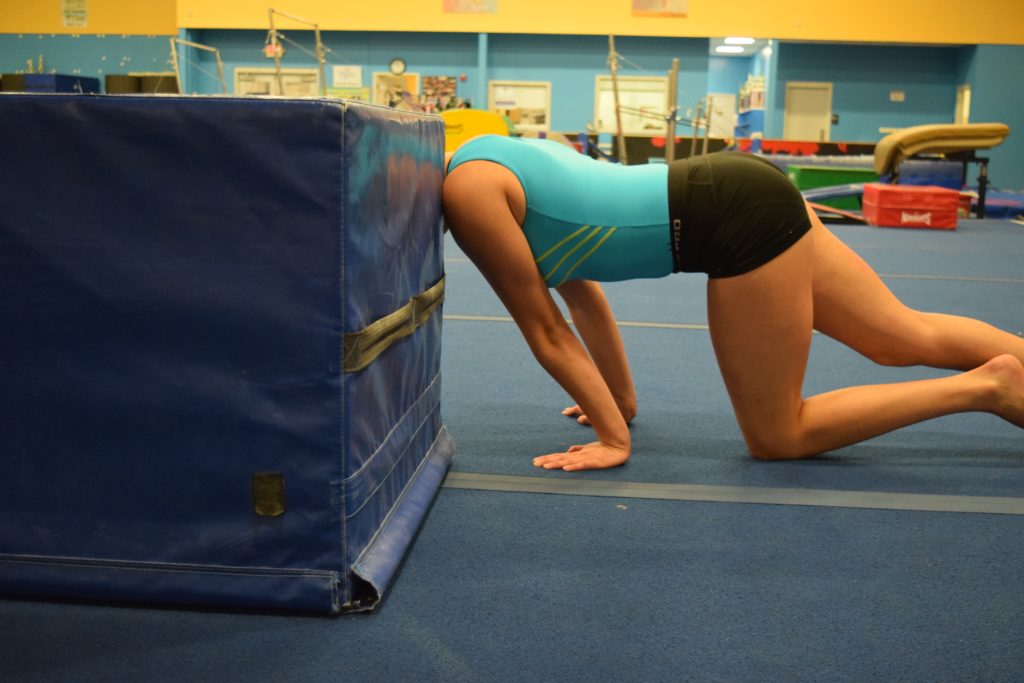
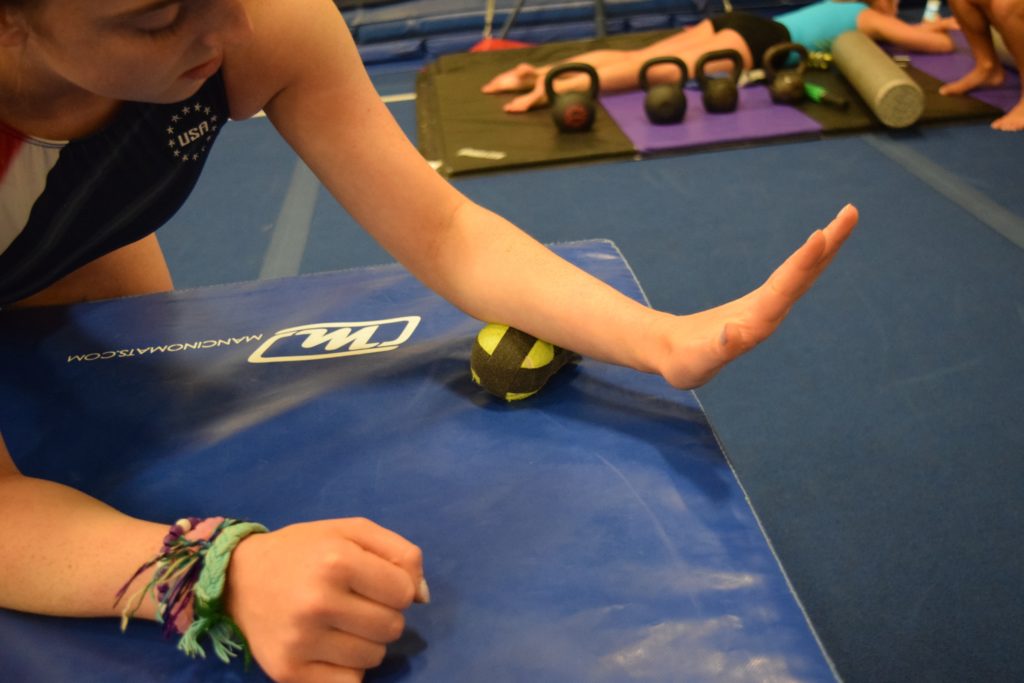
5. Core / Whole Body Tension Awareness
Sometimes for very hyper mobile or younger athletes, it comes down to body awareness and good technical coaching cues. Sometimes unfortuantely the gymnast may not be strong enough, aware enough, or have enough shaping practice to use the above body areas for forming a proper bridge pattern. This is often seen in athletes who have no apparent mobility restriction, but still seem to not have the cleanest bridge, have limitations tumbling skill performance, or struggle to be consistent in their hyper extension skills.
If this is the case, they must take a step back for some core, hip, and shoulder strength work. Then a coach must break down what it means to properly execute a bridge as opposed to just bending in half from their back. This also applies to the shoulder and hip joints. Some athletes unfortunately may not have the best overhead control/strength at end range or practice time in gymnastics progressions. Remember it takes years of dedication to develop these areas. These athletes may simply need to take a step back to rebuild these basics before going back to bridge or other hyper extension type impact skills. On example of a drill I use a lot is the floor bar circle, to help those with lots of overhead motion learn how to use it.
Concluding Thoughts
Although it seems overwhelming, taking the time to break down each of these components and properly deal with the problems found can be huge. Those readers that are not specialized in this area, I recommend again you seek out some trained in movement science or medical knowledge. It can make a very large impact on tumbling or bridge shapes, but also push off the risk of overload injury to any one spot. This by no means is an exhaustive list. There are many more possible things that could go into why an athlete can not show a full bridge. In order to really get to the bottom of it, they must be screened and taken through a full movement evaluation. For now, I hope this has helped people learn some ideas and helpful drills to work on. As noted before, if someone is having back pain or not making progress with this type of movement, you need to take them to a medical provider for a more in depth look. Best of luck,
Interested in live cases where I apply this approach and integrate it with pain science, manual therapy, repeated motions, IASTM, with emphasis on patient education? Check out Modern Manual Therapy!
Keeping it Eclectic...



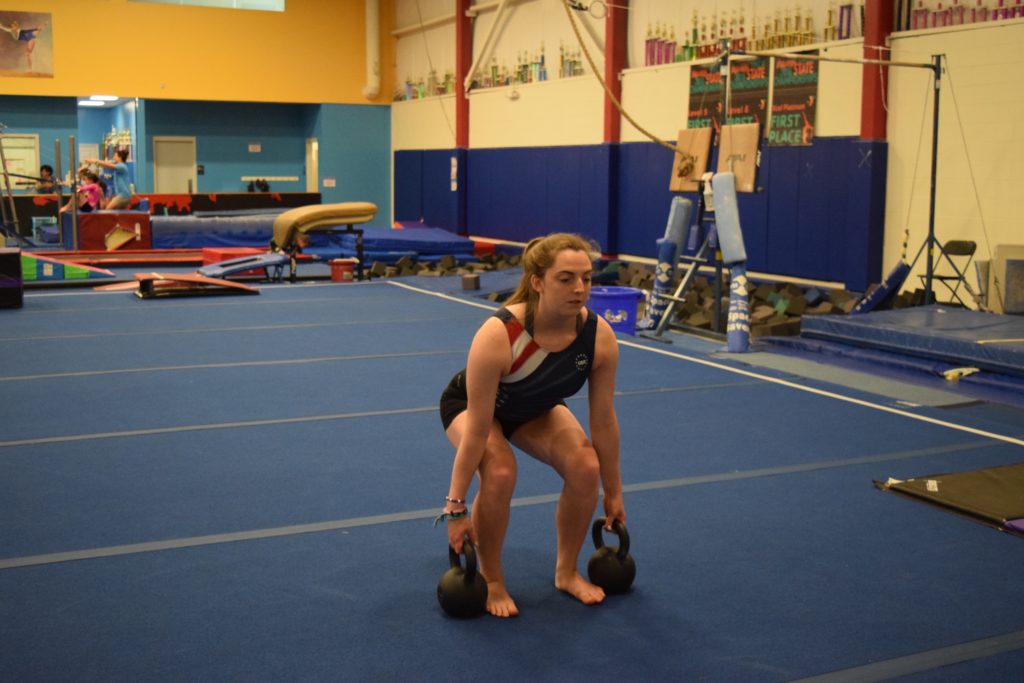












Post a Comment
Post a Comment